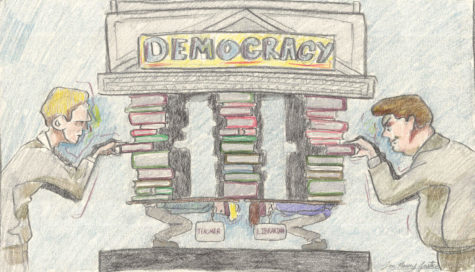Tensions with Iran have progressed over several years
Tensions between the United States and Iran escalated dramatically after President Donald Trump ordered a drone strike near Baghdad, Iraq on Jan. 3, 2020, that killed Iran’s terrorist Maj. Gen. Qasem Soleimani. Iran’s supreme leader, Ayatollah Ali Khamenei, then swiftly pledged to take “severe revenge” for Soleimani’s assassination. While the U.S.’s involvement in Iran has been widely publicized in recent weeks, the mutual tension is nothing new and has, in fact, been building up to Soleimani’s death for over a year.
On May 8, 2018, President Trump made good on an election promise and withdrew the U.S. from the Iran nuclear deal, also known as the Joint Comprehensive Plan of Action. “I made clear that if the plan could not be fixed, the U.S. would no longer be a party to the agreement,” said President Trump at the beginning of his term. “The Iran Deal is defective at its core.” The JCPOA was originally intended to restrict Iran’s nuclear weapons program in return for lifting the sanctions that had severely damaged its economy. In response, Iran called the U.S.’s withdrawal from the deal “unacceptable” and said it would continue to negotiate with the deal’s remaining parties.
Later that month on May 21, the U.S. demanded that Iran make extensive changes. If Iran did not cut its ties with the Middle Eastern terrorist groups Hamas, Hezbollah, and Islamic Jihad, and pull out of the Syrian war, among other things, then it would face even more intense sanctions from the U.S.
Between August and November 2018, as promised, the U.S. imposed two rounds of sanctions on Iran, some of which were originally lifted as part of the Iran Deal. The sanctions themselves prohibited trade with certain business sectors restricting items like gold, carpets, aviation products, and the oil industry. The restricted access to these products put immense strain on the Iranian economy and agitated its leaders.
On April 8, 2019, President Trump announced he was designating a large and powerful part of the Iranian military, the Islamic Revolutionary Guard Corps as a foreign terrorist organization. This was the first time in American history that Washington labeled the military of another country as a terrorist group. President Trump later said in an interview that the move to designate the IRGC as a terrorist group, “recognizes the reality that Iran is not only a sponsor of terrorism, but that the IRGC actively participates in, finances, and promotes terrorism as a tool of stateraft.”
Just two months later on June 20, 2019, Iranian forces shot down a U.S. military drone. While the U.S. and Iran both confirmed the incident happened, they each offered different remarks as to where the aircraft was flying and continue to dispute whether or not its presence was provocatory. The U.S. claims the aircraft was flying over international waters while Iran’s ambassador to the United Nations, Majid Takht Ravanchi, disagrees saying it was, “in full stealth mode” as it flew over Iranian air space.
Nearly six months after the initial drone incident, a rocket attack on a military base in Kirkuk, Iraq, killed a U.S. contractor and injured several other American service members. In its earliest statement, the U.S.-led coalition against ISIS did not name who was responsible for the tragic attack, but U.S. officials later blamed Hezbollah, an Iran-backed terrorist militia.
Two days later, on Dec. 29, 2019, the U.S. planned and executed “defensive strikes” in Iraq and Syria that had previously been claimed by Hezbollah. The White House then said that the strikes were in retaliation for the killing of the American contractor in Kirkuk. Iraqi security and militia sources confirmed that 55 were wounded and at least 25 were killed, four of which were Hezbollah commanders.
On Dec. 31, 2019 supporters of the pro-Iranian military groups in Iraq stormed the heavily defended U.S. embassy in Baghdad, setting the perimeter of the building on fire and severely damaging the interior. President Trump promptly tweeted that, “Iran is orchestrating an attack on the U.S. embassy in Iraq. They will be held fully responsible.”
Then, finally, on Jan. 3, 2019, during an air strike in the early hours of the morning, the U.S. struck and killed well-known terrorist leader Qassem Soleimani, at Iraq’s airport in Baghdad.





